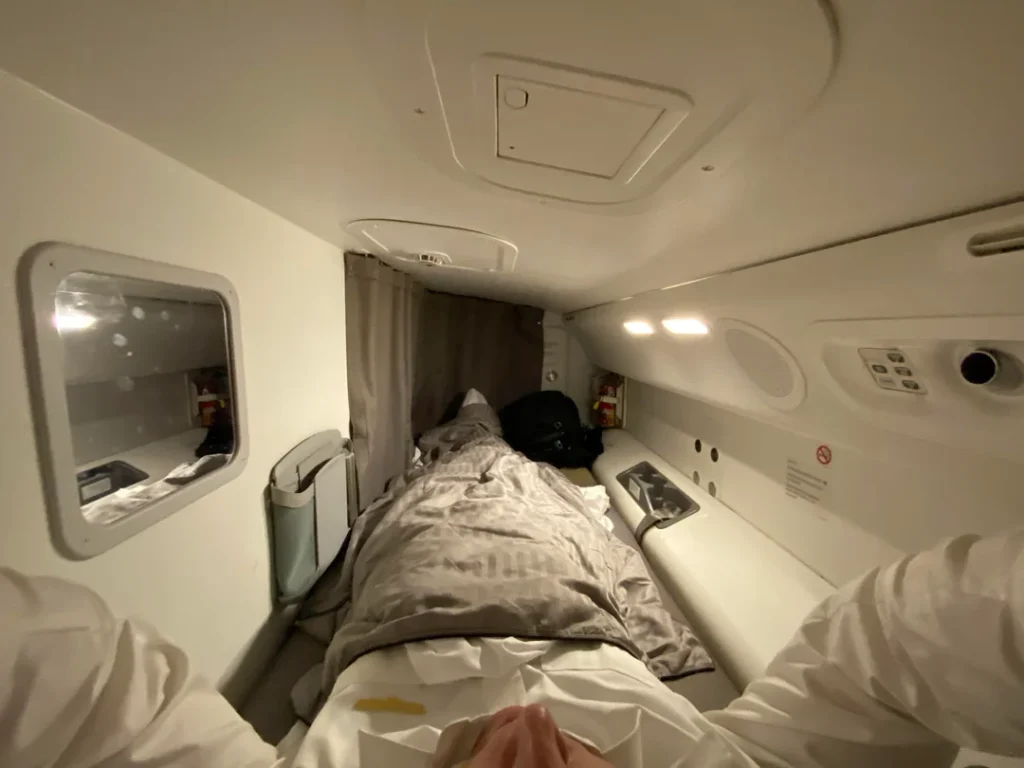
Jet lag affects millions of travelers annually, disrupting sleep patterns and diminishing travel experiences.
This comprehensive guide explores evidence-based strategies to prevent and overcome jet lag, helping travelers maintain their energy and enjoyment during international journeys.
 Photo: Ask a Pilot
Photo: Ask a PilotUnderstanding Jet Lag and Its Impact
Jet lag occurs when travel across multiple time zones disrupts our internal body clock or circadian rhythm.
This disruption affects sleep patterns, digestion, mood, and physical performance. While jet lag is temporary, its effects can significantly impact the first few days of travel, particularly when flying east.
Strategic Pre-Flight Planning
The direction of travel plays a crucial role in jet lag preparation. When traveling east, begin adjusting your wake times 30-60 minutes earlier each day for several days before departure.
Include morning exercise sessions and seek early exposure to natural light. Additionally, shift your caffeine consumption to earlier hours and gradually adjust meal times to match your destination schedule.
For eastward travel:
- Begin adjusting wake times 30-60 minutes earlier each day for several days before departure
- Schedule morning exercise and early exposure to natural light
- Shift caffeine consumption to earlier hours
- Gradually adjust meal times to match the destination schedule
For westward travel, the approach should be reversed. Delay your daily routines by 30-60 minutes, including sleep and wake times, exercise sessions, and caffeine intake.
This gradual adjustment helps your body clock shift more naturally to your new time zone.
For westward travel:
- Delay daily routines by 30-60 minutes
- Push back sleep and wake times
- Postpone exercise sessions
- Adjust caffeine intake to later hours
 Photo: Reddit User
Photo: Reddit UserIn-Flight Comfort and Rest
Creating a comfortable sleep environment during your flight is essential for minimizing jet lag’s impact. Successful in-flight rest requires careful preparation. Essential items include:
- High-quality neck pillow
- Comfortable blanket
- Eye mask for light control
- Earplugs or noise-canceling headphones
- Loose, comfortable clothing
While sleeping pills might seem like an easy solution, they can be counterproductive. These medications:
- Interrupt natural sleep cycles
- May not provide restorative rest
- Can interact dangerously with alcohol
- Should only be used under medical supervision
Instead, focus on natural relaxation techniques such as meditation, deep breathing exercises, or yoga nidra (non-sleep deep rest).
- Meditation practices
- Deep breathing exercises
- Yoga Nidra (non-sleep deep rest)
- Mindfulness activities
Post-Flight Recovery
Light exposure plays a fundamental role in resetting your body clock after arrival. Seek morning sunlight exposure and use natural light to signal wake times to your body.
Avoid bright lights when trying to sleep. One should consider light therapy if natural light is limited.
Physical activity also helps regulate your internal clock like taking morning walks outside or performing light exercises upon arrival can boost energy levels and aid adjustment.
However, avoid intense workouts close to bedtime as they might interfere with sleep.
 Photo: Nataliya Vaitkevich | Pexels
Photo: Nataliya Vaitkevich | PexelsAdvanced Recovery Methods
For travelers seeking additional support, several advanced techniques can aid recovery. Deep yogic breathing helps re-oxygenate your body after flying in pressurized cabins.
Some travelers find benefits in temperature therapy, such as brief cold showers or sauna sessions, which can help combat fatigue and boost energy levels naturally.
Supplementation and Nutrition
While supplements should always be used under medical supervision, certain options may support jet lag recovery.
Zinc can help support immune function during travel, especially important when exposed to recycled air and new environments.
Vitamin D supplements may be beneficial, particularly when traveling to locations with limited sunlight.
Melatonin, a natural sleep hormone, can be particularly effective when used properly. Starting with low doses of 0.25 – 1 mg and timing intake according to your destination’s schedule.
Hydration and Eating Patterns
Proper hydration and strategic eating patterns significantly impact jet lag recovery. Maintain consistent water intake throughout your journey and avoid excessive alcohol and caffeine consumption.
Aligning your meals with local eating schedules helps reset your internal clock. Choose light, easily digestible foods during the adjustment period to avoid additional stress on your system.
 Photo: Andrea Piacquadio | Pexels
Photo: Andrea Piacquadio | PexelsEssential Recovery Principles
The cornerstone of effective jet lag management lies in five core principles:
- Prioritize morning light exposure at your destination
- Align meal times with local schedules
- Maintain regular physical activity
- Focus on proper hydration
- Consider appropriate melatonin supplementation
These fundamentals work together to help your body adjust more quickly to new time zones.
Professional Tips for Quick Adjustment
When adjusting to a new time zone, resist the temptation to nap upon arrival, regardless of how exhausted you feel.
Instead, push through until the local bedtime to help reset your internal clock. Create an environment conducive to quality sleep by keeping your room temperature cool, ideally between 65-68°F (18-20°C).
Rather than relying on sleep medications, which can disrupt natural sleep patterns, incorporate relaxation techniques such as deep breathing, gentle stretching, or meditation.
Maintaining a consistent sleep schedule during your first few days is crucial like wake up and go to bed at the same times each day, even on weekends.
This structured approach helps your body adjust more quickly to the new time zone and minimizes the duration of jet lag symptoms.
 Photo: Andrea Piacquadio | Pexels
Photo: Andrea Piacquadio | PexelsLong-Term Travel Strategies
For frequent travelers or those crossing multiple time zones regularly:
- Develop a consistent pre-travel routine
- Build resilience through regular exercise
- Maintain good sleep hygiene
- Consider time zone changes when planning meetings
- Allow adjustment days in travel schedules
Remember that jet lag affects everyone differently, and recovery strategies should be personalized. What works for one traveler may not work for another.
Focus on understanding your body’s responses and adjusting these strategies accordingly for optimal results.
Key Takeaways
Beating jet lag requires a strategic approach before, during, and after your flight. Start adjusting your schedule several days before departure based on your travel direction – earlier for eastward flights, and later for westward journeys.
During the flight, prioritize natural rest over sleep medications, and create a comfortable environment using essentials like eye masks and noise-canceling headphones.
Upon arrival, resist the urge to nap and instead stay awake until local bedtime. Morning light exposure is crucial for resetting your body clock, so spend time outdoors early in the day.
Support your body’s adjustment through proper hydration, strategic meal timing, and light exercise. While supplements like melatonin may help, they should be used cautiously and under medical supervision.
Remember that recovery speed varies among individuals, but consistency in following these strategies significantly reduces jet lag’s impact.
By focusing on natural light exposure, maintaining proper sleep hygiene, and staying active, most travelers can adjust to new time zones within 2 to 3 days.
Stay tuned with us. Further, follow us on social media for the latest updates.
Join us on Telegram Group for the Latest Aviation Updates. Subsequently, follow us on Google News
Where do Pilots and Cabin Crew Sleep on Long-Haul Flight?
The post How to Avoid Jet Lag on Long Flights: A Complete Guide appeared first on Aviation A2Z.

















